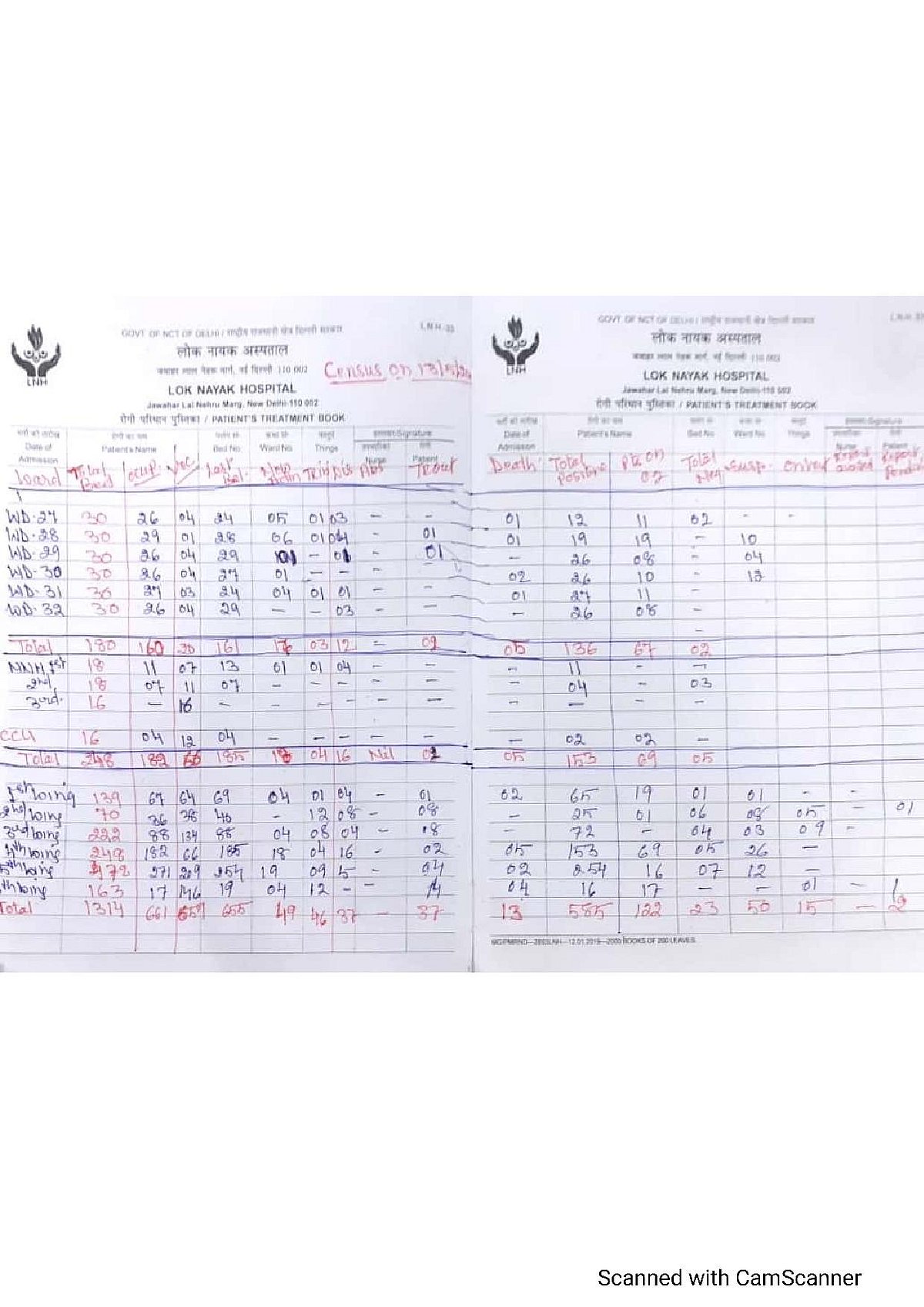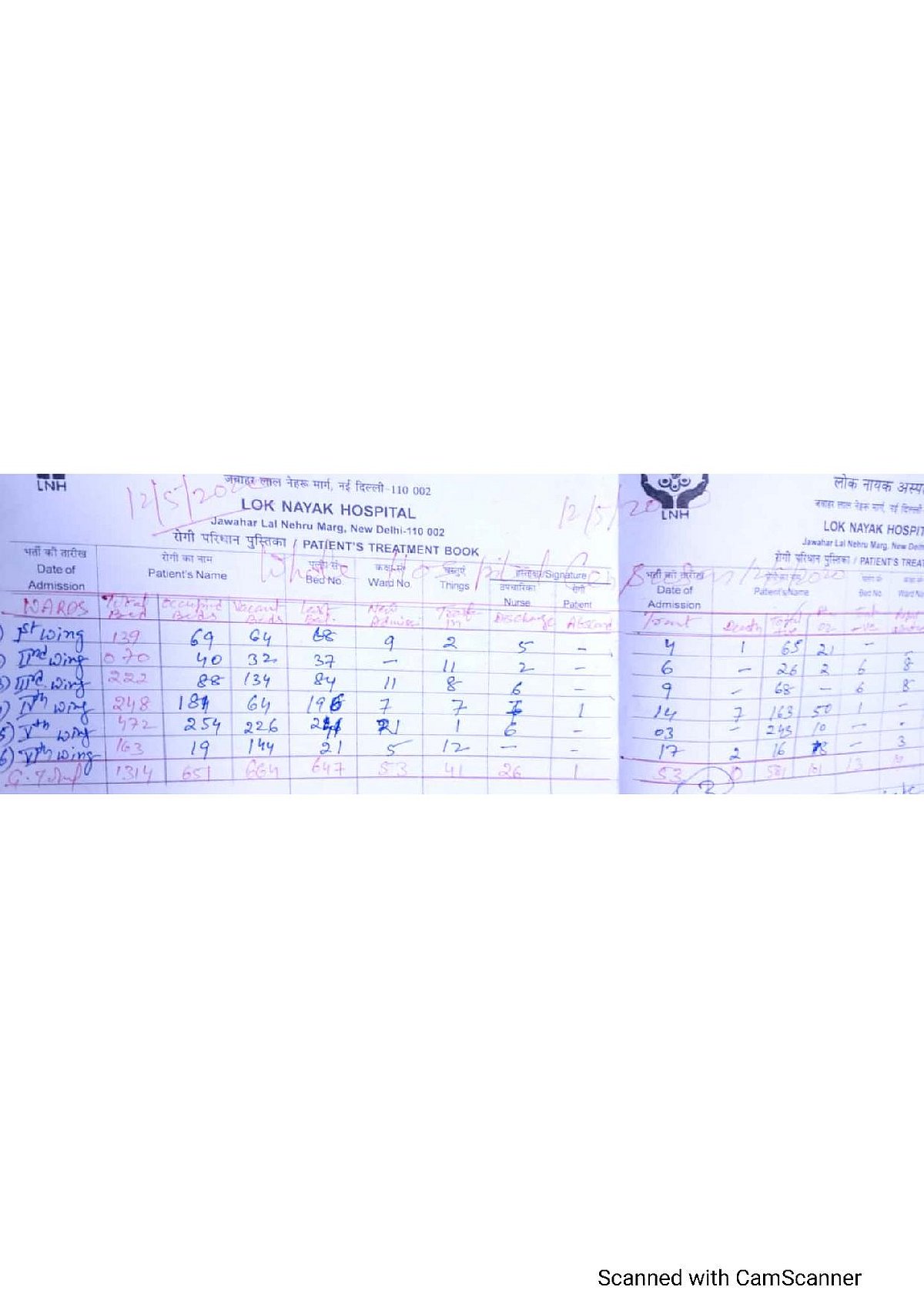Delhi stops sharing hospital-wise COVID-19 death data, under-reports number of patients on ventilator
The Aam Aadmi Party-led government has dropped the hospital-wise death data from his daily health bulletin. They are also fudging data about the number of patients on ventilators

In less than a week after National Herald had exposed that the Delhi government has been fudging the death data, the Aam Aadmi Party-led government has stopped including the hospital-wise death data from the daily health bulletin. This will inevitably lead to more cover-ups in the death data from the National Capital and also enable the government to avoid questions about number of deaths in specific hospitals.
Additionally, the government has also been under-reporting the number of Covid-19 patients on ventilators in hospitals. In the health bulletin, the government has shown that there were no patients on ventilators at Ram Manohar Lohia hospital in Delhi. But, according to sources, there are five Covid-19 positive patients at RML Hospital. Similarly, at Lok Nayak Hospital, on May 11, there were three Covid-19 patients on ventilators, on May 13, 15 patients. But, the May 14 health bulletin shows that there are only two patients on ventilator at LN Hospital.
What is still disconcerting is that the health bulletin released by the Delhi government on May 14 states that there have been only 115 COVID-19 deaths in the national capital. National Herald has been able to count more than 200 COVID-19 positive deaths.
Until May 13, the Delhi government’s health bulletin had hospital-wise data of cumulative deaths, even though they had changed the format of its reporting. Until May 12, cumulative death data was the second column under the ‘dedicated COVID Hospital Status’. On May 13, it became the last column and on May 14, it has been completely dropped.
Even till May 13, the death data given by the government was flawed as it did not indicate all the hospitals where the deaths of patients who had tested positive for coronavirus had occurred. It only gave the number of deaths in prominent hospitals.
According to the death data from Delhi government, as of May 13, Lok Nayak Hospital has had only 19 deaths. But, on May 13 at LN Hospital there were 13 deaths, of which at least 10 were of patients who had tested positive for COVID 19. Three of them were awaiting results and it was expected that they would also be COVID positive patients. On May 12, there were 10 deaths in the same hospital, of which at least six had tested positive for the virus.
The Delhi government had constituted a Death Audit Committee on April 20 and as per the standard operating procedures listed, every hospital is required to send the committee case details of all COVID-19 positive deaths before 5pm every day. The committee comprising Dr Ashok Kumar (of DGHS), Dr Vikas Dogra (of RGSSH) and Dr RN Das (of MS-Nursing Homes) has to meet everyday at 5.30 pm to examine the documents and relevant details. They would declare the death as ‘Covid-19 or otherwise’.
The Indian Council for Medical Research (ICMR) ICMR and National Centre for Disease Informatics and Research (NCDIR) had released guidelines to decide on the COVID-19 deaths. It states that COVID-19 is reported to cause pneumonia/ acute respiratory distress syndrome (ARDS) / cardiac injury / disseminated intravascular coagulation and so on. These may lead to death. It is likely that COVID-19 is the underlying cause of death (UCOD) that lead to ARDS or Pneumonia in most of the deaths due to COVID-19 (test positive and symptoms positive).
They had also stated that robust data is needed from every district and state in India to measure the public health impact of COVID 19 and to plan for timely health interventions and protect communities.
This is echoed by virologist Dr T Jacob John, formerly with the Christian Medical College, Vellore. “If you want to be able to project what is happening in the future, you need to know what is happening in the present. Ideally, you would need to know the death on the day it happened and the location where it happened. This hold good for any state as these are the ‘tip-of-the-ice-berg’ cases. For most people, deaths are the most stable indicator of how an epidemic is progressing and consequently helps in in projecting what will happening 4 weeks, six weeks and sight weeks from now. If you get this wrong, your projections for the future are on shaky grounds. This is important because we have to know if we will have a crisis at hand four weeks from, whether our systems will be overwhelmed,” explained Dr John.
In our country a lot of people will not die in hospitals, especially the elderly people. “Fortunately, in Delhi more people will die in a hospital than in Bihar or even in Tamil Nadu. As a disease, even with our best efforts, we have no idea about the extent of infection or transmission. If death data is not being revealed accurately, there is dishonesty about the level of disease spread in the community. The deaths show you what fraction of people have been infected and what is the level of prevalence of a condition in a population. That is crucial,” underscored Dr John.
Transparency is important as the public has the right to know about the extent of the problem is large. Currently, the infection has not yet controlled, pointed out Dr John and and it is unlikely to be controlled with the measures with the governments are taking.
So, then what is the solution? “If government have to fight the pandemic, there has to be community participation. People have to fight COVID-19 together. It is not the government vs the public. You need the public to join with the government to result in an action that will solve the problem we have now. That comes with trust in the government and that begins with data that is being put out,” asserted Dr John.
After analysing COVID-19 deaths last week, National Herald had revealed last week that the state has been hiding the number of deaths due to coronavirus in the National Capital. A scrutiny of the data from Lok Nayak Hospital, a dedicated COVID-19 facility in Delhi showed that on May 4, six patients died, on May 5, six patients died and on May 6, the tally was five. On May 3, no one died at LN Hospital. All the deaths happened in the medicine ward of the hospital where most of the patients have co-morbidities.
This under-reporting of death data, not just in Delhi, but the while country, is likely to explain the ‘mystery behind India’s lower death rates’. In an article on BBC, K Srinath Reddy, president of the Public Health Foundation of India, had said there were no reports yet of a massive surge in hospital deaths, which would surely have not gone unnoticed.
But, we have seen that even in the face of proof, the Delhi government has been insisting that they have not covered up an COVID-19 deaths. Hospital data shows another story altogether. Delhi’s health minister Satyendar Jain asserted that there was no reason to hide anything and not a single case would go unaccounted for in the national capital. He then proceeded to blame the hospitals for the delay as they were not sending death details on time. This too has been countered by Delhi hospitals.
As of May 14, Delhi has recorded 8,470 COVID-19 cases, of which at least 472 were new cases. This is the highest number of positive cases reported in a day and alongside he death toll also rose to 115. The report added that the cumulative deaths have risen after they were audited by the death audit committee.
Follow us on: Facebook, Twitter, Google News, Instagram
Join our official telegram channel (@nationalherald) and stay updated with the latest headlines
Published: 14 May 2020, 6:24 PM


